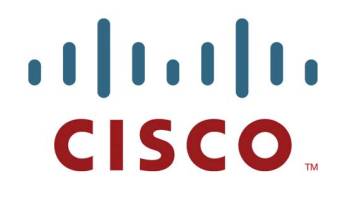Cisco Opens Green Data Centre In Texas

Cisco’s new data centre will be a showcase for technologies to reduce power and cooling costs
Cisco Systems is opening a new data centre that is going to take on multiple roles for the networking giant, from acting as a showcase for its wide-ranging data centre technologies to driving down costs through its multiple environmentally friendly features.
The facility, which officially opened on 15 April in Allen, Texas, will serve as a key step in Cisco’s cloud-computing and virtualisation ambitions. I will also help the company pare down the number of data centres it’s currently running and will support Cisco’s internal operations.
IT services cloud
It will be paired with a Cisco data centre in nearby Richardson, Texas, in an active-active model to enable the two facilities to create a virtualised and dynamic IT services cloud and to serve as backup sites for each other, according to Cisco officials.
“We are using all the relevant Cisco technologies” in the facility, John Manville, vice president of IT at Cisco, said in an interview with eWEEK before the opening.
Top data centre players, like IBM and Hewlett-Packard, have been using their own facilities to not only drive down costs and consolidate multiple data centres, but also to showcase for customers the capabilities of their technologies. HP officials in 2006 announced plans to consolidate 85 global data centres into six, using their own technologies to create highly flexible, energy-efficient, scalable and virtualised facilities that can be used as a proof-point for customers. They also have said that the project gave them greater credibility when talking to customers about data centre transformation.
Manville said the new facility in Texas would do the same for Cisco. Company officials conducted a study three years ago taking a look at Cisco’s data centres and determined that the vendor needed to make its data centres more efficient and resilient, and needed to change how IT operated.
“We effectively needed to become an internal service provider,” Manville said.
Over the past two years, the networking giant has aggressively expanded its role in the data centre, particularly with the introduction of the UCS (Unified Computing System), a converged data centre offering that puts (Cisco-branded) servers, networking, storage, virtualisation and management software into a single package. And as with the UCS and other data centre effort, partners like VMware, EMC and NetApp also will have technologies running in the new data centre.
The facility will integrate UCS, Cisco’s united computing, fabric and network services offerings into a single package that will offer cloud computing capabilities, creating a scalable and secure platform that can move applications within the data centre, between data centres or into the cloud, according to Cisco. Among the Cisco technologies in the data centre are the UCS, Nexu 5000 and 7000 switches, Nexus 1000V virtual switch, MDS storage networking switches, Data centre Manager and NX-OS, the vendor’s data centre operating system that runs on Cisco’s data centre offerings.
The cloud capabilities are enhanced via what Cisco calls a MVDC, or Metro Virtual Data centre, pairing the new data centre with the one in Richardson. Both data centres will run applications simultaneously, increasing resiliency and creating an IT services cloud.
European expansion
Manville said Cisco would look to continue this pattern with other new data centres, particularly as the company moves to consolidate its global data centre operations. He estimated that Cisco currently runs between 70 and 80 data centres worldwide, with many of them coming to the company via acquisitions.
“Cisco has acquired many companies, and most have come with some sort of data centre facilities,” Manville said.
Cisco already is working on plans for another MVDC setup in Europe, and is considering a third somewhere in Asia, he said. The goal is to use the three pairs of production data centres as the foundation for Cisco’s private cloud, called Cisco IT Elastic Infrastructure Services, which not only will serve employees, but also customers and partners. IT services will range from video and mobility to security and collaboration.
The cloud services operation also will help drive down power, cooling, space and operational costs, according to Cisco. The company also was able to incorporate a range of green IT features in the new data centre that will help drive down power and cooling costs while increasing the facility’s energy efficiency, according to Manville.
On the technology side, the company’s Unified Fabric reduces the number of switches, adapters and cables that are needed by bringing together storage and data traffic. For the uninterruptible power supply room, Cisco opted for rotary flywheels instead of batteries, saving costs and reducing the flow of batteries into the environment. The data centre can use outside air as much as 65 percent of the time to cool data centre equipment – driving down power and cooling costs – and has a lagoon that collects rainwater to be used for irrigation and landscaping. Solar cells on the roof generate 100 kilowatts of power, which is used to cool the offices in the data centre.
The savings can be significant, according to Cisco. With the United Fabric, Cisco is saving $1m (£615,000) in cabling, and less cabling means better airflow through the data centre, which reduces cooling costs, according to a Cisco spokesperson. Using outside air is expected to save Cisco $600,000 a year in cooling costs.
The result is a PUE (Power Usage Efficiency) rating of 1.35. The PUE metric was created by the Green Grid group to measure data centre energy efficiency, with the ultimate goal of businesses to reach a PUE of 1.0.
